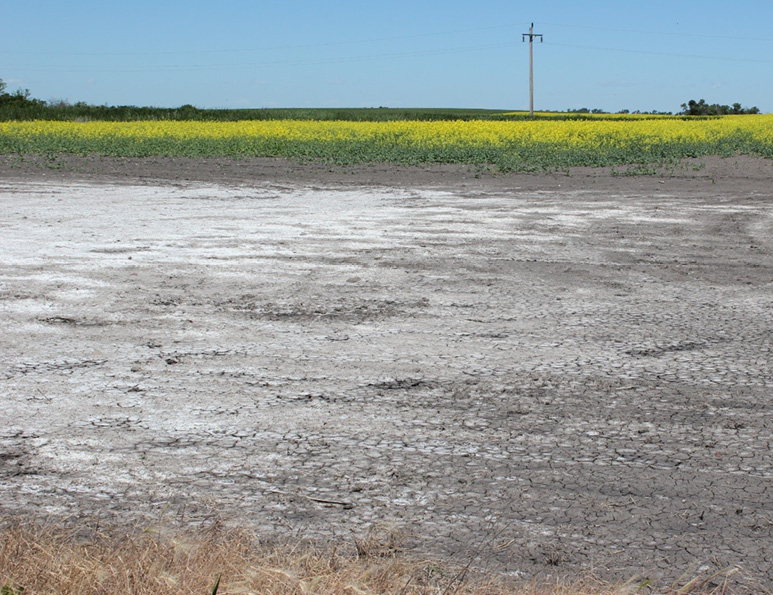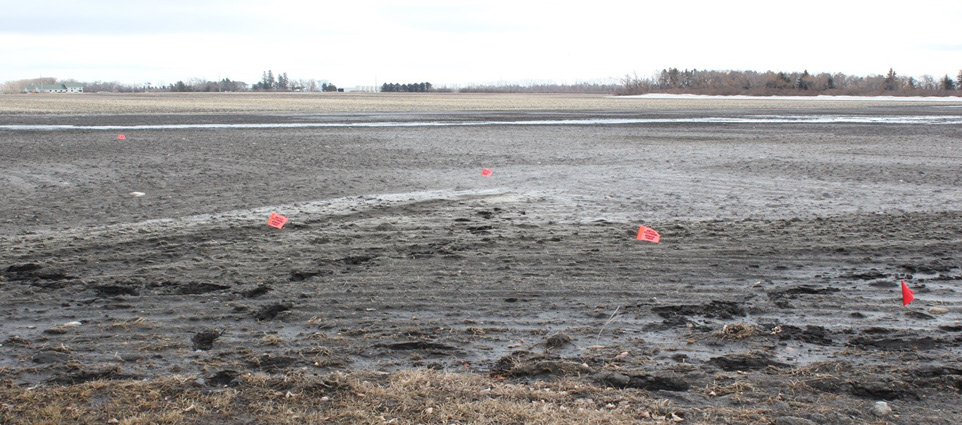There are different methods to analyze soil samples for soluble salt and sodiumcausing sodicity levels. For salts, for example, the EC values measured with the 1-to-1 soil-to-water method will result in lower values than the saturated paste extract method.
Depending upon soil texture, generally EC values determined through the saturated paste extract method are twice or more than the values obtained through the 1-to-1 method. However, the 1-to-1 method is much easier and less expensive to use, and it is the method most used by soil laboratories to evaluate soil salinity levels.
If soil textural values are known, then the formulas in Table 1 can be used as a rough estimate to convert EC values determined through one method to the other. However, considerable variability exists around the conversion values.
Table 1. General conversion from 1-to-1 soil-to-water slurry method used by many commercial labs to the saturated paste extract method used in research applications.X = EC of saturated paste extract Y = EC of 1:1 soil:water slurry| Soil Texture | Coarse | Medium | Fine |
|---|
| | X = 3.01y – 0.06 | X = 3.01y – 0.77 | X = 2.96y – 0.95 |
| | Y = 0.33x + 0.06 | Y = 0.33x + 0.77 | Y = 0.375x + 0.97 |
Hogg, T.J., and Henry, J.L. 1984. Comparison of 1:1 And 1:2 Suspensions and Extracts with the Saturation Extract in Estimating Salinity in Saskatchewan Soils. Canadian Journal of Soil Science, 1984, 64(4): 699-704, 10.4141/cjss84-069.
For soil sodicity levels, researchers use the SAR test.
The SAR is a measure of the ratio of sodium (Na+) relative to calcium (Ca2+) and magnesium (Mg2+) in the water extract (solution phase) from a saturated soil paste (Eq. 1). The units of Ca2+, Mg2+ and Na+ are milliequivalent/liter [meq/L) or mmol(c)/L].
[Na+]
SAR = ———————— (Eq. 1)
([Ca2+] + [Mg2+]) 1/2
————————
2
The SAR test is laborious, time-consuming, costly and not performed on a routine basis. To make it cost- and time-effective, NDSU soil scientists conducted a study consisting of 1,974 soil samples in which SAR values were correlated against the %Na values (DeSutter et al., 2015). Research findings suggested a very strong correlation between SAR and %Na tests (r2 = 0.88), especially with SAR values of 20 or less by using the following formula (Eq. 2):
SAR = 1.15 * %Na – 0.91 (Eq. 2)
Considering the fact that the %Na test is performed on a routine basis for regular farm use (excluding research studies) apart from SAR, %Na test can be used to assess soil sodicity.
The %Na (solution + exchange phase) is the amount of sodium (Na+) in the 1M ammonium acetate extract from dissolved salts and adsorbed on soil clay exchange sites, compared with the salt-derived and exchanger-derived base cations (Eq. 3). The units for Na+, Ca2+, Mg2+ and K+ are cmol(+)/kg or meq/100g.
100 * Na+
%Na = —————————— (Eq. 3)
Ca2+ + Mg2+ K+ Na+
Another example of analyzing a soil property by using different methods is the soil cation exchange capacity (CEC). The method used for true CEC determination (Na+ saturation and NH4+ extraction) is more expensive and complex, compared with the routine method used by soil testing laboratories (CEC by addition) in our region. However, cation exchange capacity analyzed by the addition method is artificially high when soluble salts are present as ions coming out of the salts are added to the CEC. If time and money are not the constraints and obtaining accurate results is the objective, EC and SAR should always be analyzed using Saturated Paste Extract Method, whereas CEC should always be analyzed using the Na+ saturation and NH4+ extraction method.
Table 1. General conversion from 1-to-1 soil-to-water slurry






